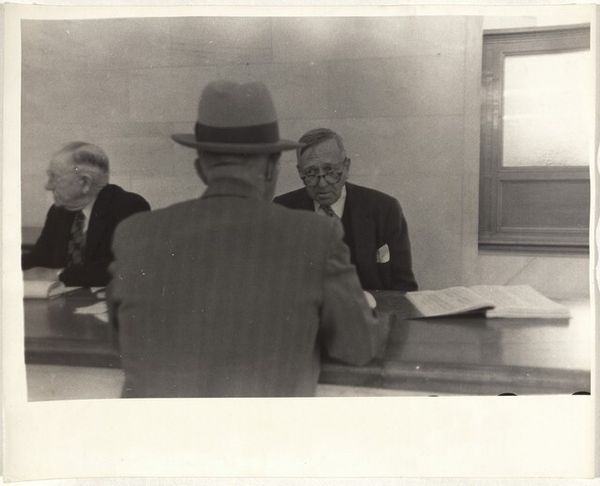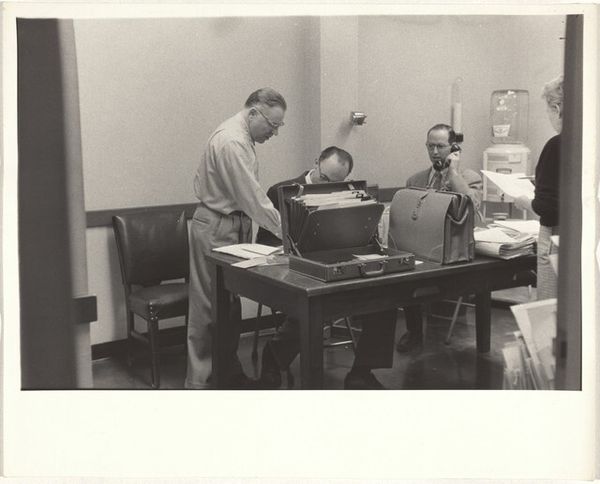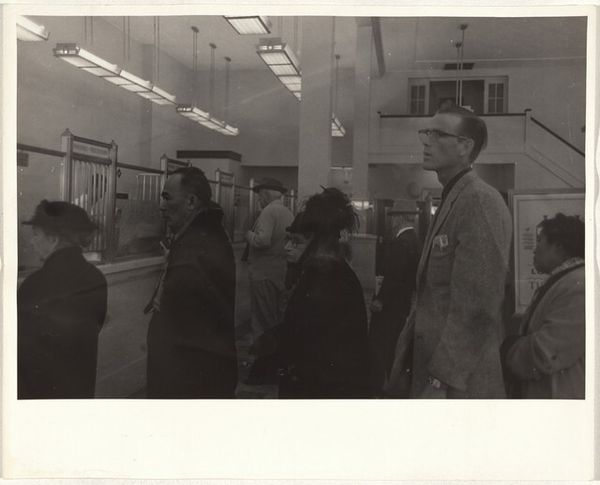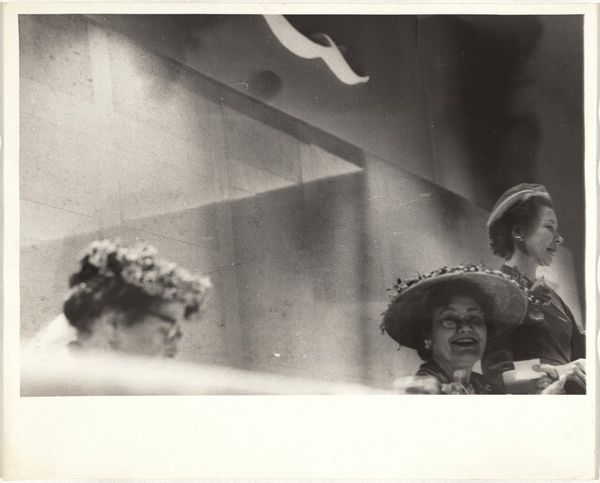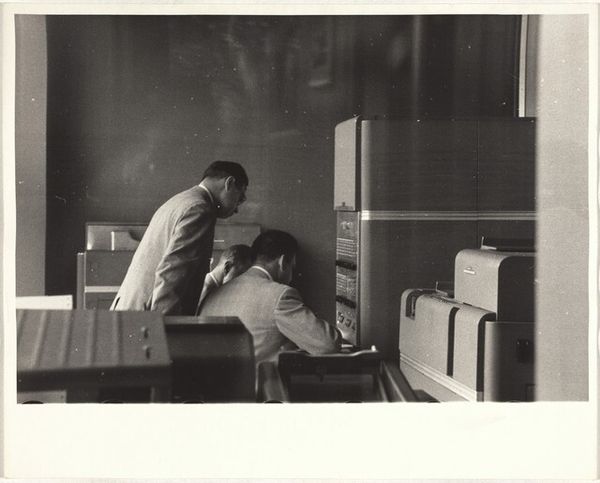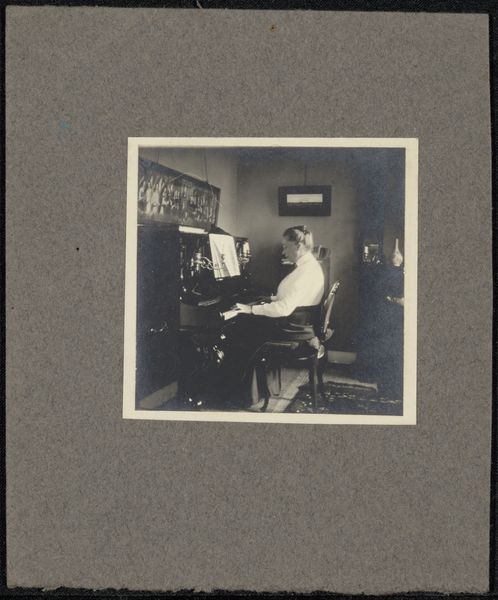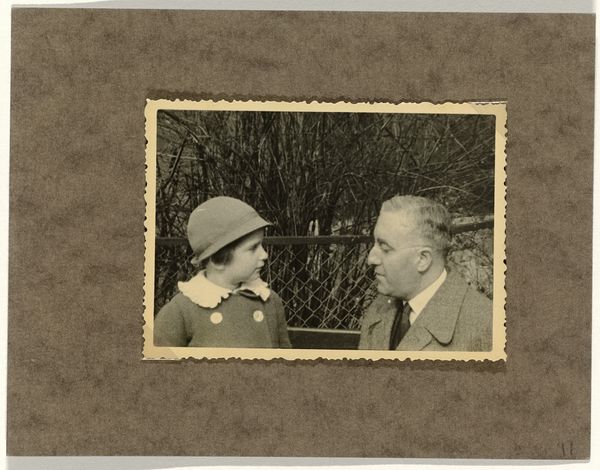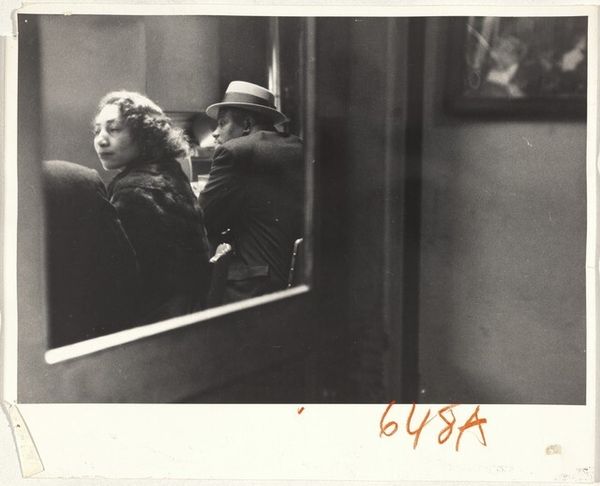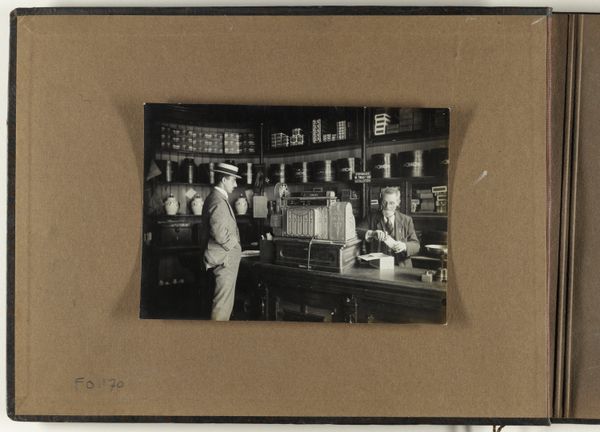
#
print photography
#
wedding photograph
#
photo restoration
# print
#
wedding photography
#
archive photography
#
culture event photography
#
historical photography
#
couple photography
#
wedding around the world
#
celebration photography
Dimensions: sheet: 20.3 x 25.3 cm (8 x 9 15/16 in.)
Copyright: National Gallery of Art: CC0 1.0
Curator: Robert Frank's 1956 gelatin silver print, "Men, Navy Recruiting Station, Post Office--Butte, Montana," immediately conveys a mood of muted resignation, doesn't it? There is a pervasive melancholy anchored in these shadowed figures. Editor: Yes, the grainy texture enhances the overall somber atmosphere. It feels candid, almost intrusive—we're witnessing a scene fraught with the unspoken. The sharp contrast between light and shadow does suggest this feeling of somber quietude that speaks to the complexities of societal expectation versus individual desire during the post-war era. Curator: I’m struck by the compositional elements, in how Frank utilizes framing. Notice how the men are grouped—some in shadow, some in direct light, but all somewhat obscured. Their placement emphasizes the sense of anonymity and conformity prevalent in the period. The hats they wear also point to the uniform look that creates cohesiveness, although in dark colors and materials, these do also convey the somber mood in your reading of this image. Editor: Precisely. Those hats aren’t just fashion accessories; they’re signifiers of an era demanding a particular kind of masculine performance. Are these men considering naval service out of patriotism or economic necessity? What are the limitations implied by their attire? These men look burdened, as if wearing that role or clothing becomes an issue. There seems to be an element of critique here from Frank, and through him, to us, regarding what it meant to be a man in that particular moment of time and place. Curator: Looking closely, the composition guides us. The figures aren't facing forward, and several stand close to signage or bulletin boards with vertical forms that guide our attention, dividing the scene in a specific way. In that, I observe a formal mirroring that adds visual tension. Editor: Right. And these tensions remind us of larger concerns, considering the intersection of labor, masculinity, and national identity in the 1950s. What stories do those faces hide? Or perhaps, what stories are hidden because of the uniformity? I wonder, as viewers now, how does that mirror our current realities? Curator: A powerful meditation, indeed, that pushes us to observe how documentary and candid forms also become metaphors in art. Editor: It makes you think, doesn't it? And keeps on thinking beyond.
Comments
No comments
Be the first to comment and join the conversation on the ultimate creative platform.


